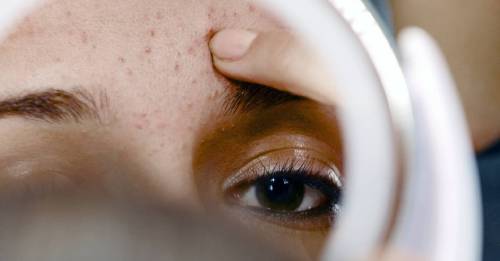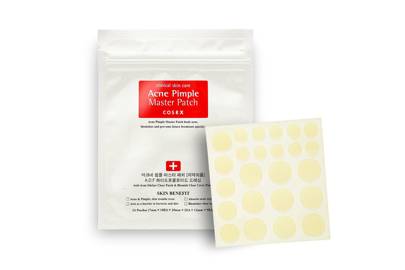While there can be many underlying causes including stress and diet, acne also causes different types of spot, including blackheads, whiteheads, pustules, nodules and cysts. It’s important to identify the cause as well as the type of acne in order to receive the best treatment.
Chances are you’ve experienced acne at some point in your life. In fact, according to the NHS, acne is one of the most common skin conditions with 80% of people aged 11 to 30 being affected. And it can be debilitating, painful, as well as causing extreme stress and anxiety, causing some to withdraw socially and experience feelings of depression.
One of the more severe types of acne is cystic acne, which causes large pus-filled lumps that look a little like boils, and which pose the biggest risk of scarring, leaving many people suffering with a permanent reminder for years, if not for life, even after the acne has cleared.
We chat to Gigi Shaker, Senior Medical Aesthetician at Skincare Studio Young LDN, for everything you need to know about cystic acne, including the symptoms, possible causes, treatment and how to deal with scarring.

And for those days when you just want to cover up with a concealer, check out out round up of the best products available RN.
WHAT IS CYSTIC ACNE
‘We typically grade acne in grades 1-4. Grade 1 is very mild blackheads, whiteheads and oily skin, and it gradually progresses through the stages to grade 4, which is more visible as the skin becomes inflamed, creating pustules and nodules that are red and contain puss,” says Gigi. “Grade 4 (cystic acne) can often be disfiguring.”
Cystic acne can present as large, painful, pus-filled lumps deep within the skin, which may hurt, itch and even burst. If they are squeezed or burst, they may cause permanent scarring.
WHAT CAUSES IT?
According to Gigi, there are three main causes of cystic acne. “First, there’s hormonal cystic acne,” she explains. Although we typically associated hormones with puberty, hormonal fluctuations can occur at any age.
“There’s also bacterial cystic acne, which is caused by topical stressors such as sweating, touching your face without washing your hands and not changing your pillow cases regularly.” It’s best to eliminate this as a potential cause straight away and clean everything that touches your face like your phone and your pillows, as well as resisting the urge to touch your skin.
“Finally, there’s familial. Cystic acne can run in the family and a person can be genetically predisposed,” says Gigi. Unfortunately, there’s not much you can do about this so it’s all down to proper management and adequate treatment.
WHAT TREATMENT IS THERE?
According to Gigi, the best treatments are dependent on age, severity and budget; “treatment of cystic acne is very individual and will be specifically tailored to your individual needs. At Young LDN We use a combination of therapies ranging from LED, cosmeceutical home care (with very active topical ingredients), deeper chemical peels, laser and finally micro-needling to face any remaining acne scarring.”
There’s also specific ingredients to look out for in your skincare. Benzoyl peroxide (which can be prescribed by your GP or dermatologist) and salicylic acid are especially effective, helping to control oil production and prevent future breakouts. Retinol or any exfoliating acid will help to buff away dead skin cells that trap oil under the surface.
However, resist the temptation to go too hard on your skin. “Using too many harsh products will create a secondary issue of dehydration. Therefore, treatment ingredients like salicylic acid and benzoyl peroxide must be combined with calming and hydrating ingredients such as botanicals and hyaluronic acid.
If you’re considering a facial treatments, do not book in for a spa facial without consulting your doctor or dermatologist. Many of the products used in traditional spa facials and non-medical facials could further irritate your skin especially if they contain high levels of active ingredients, fragrances or essential oils. Seriously, steer clear.
WHAT DO I DO ABOUT SCARRING?
If you have existing acne, as well as acne scars, your best bet for addressing both is to use products with resurfacing ingredients. “Glycolic acid and Lactic acid (which is gentler on the skin), help to minimise the depth and severity of scars, while working to keep the pores clear,” says Morris, who recommends Jan Marini BioClear £44.50 Effortless Skin to clear up active acne while addressing mild scarring.
If your acne has cleared up, you may want to think about going pro. “The most effective way to rid the skin of acne scarring is through a treatment performed in clinic, such as microdermabrasion, laser resurfacing or a peel,” says says Julie Morris, Aesthetics Nurse, Effortless Skin.



